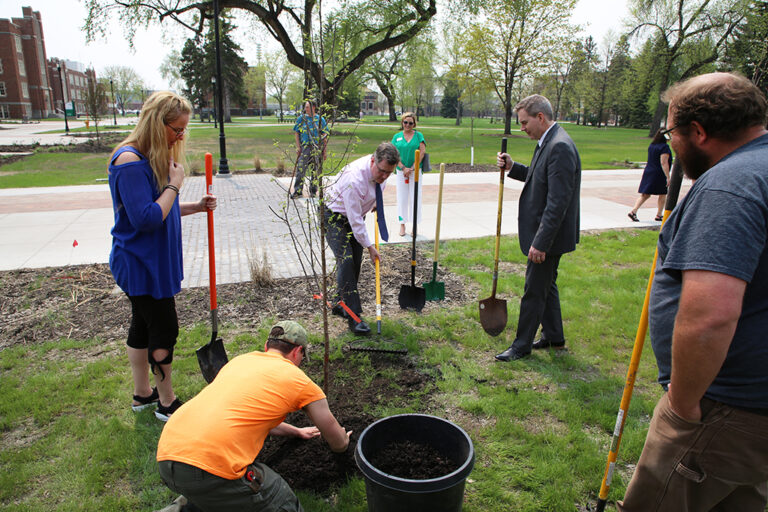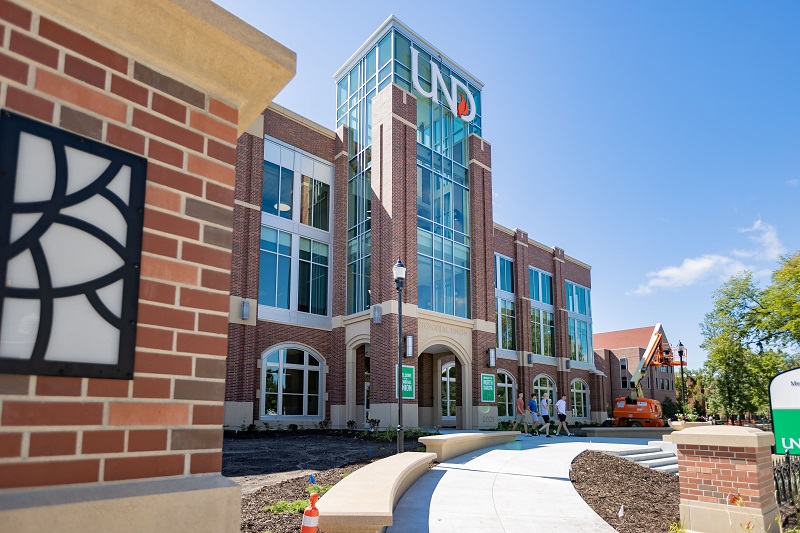For UND med students, it’s March “Matchness”
Fifty-five senior medical students, members of the Doctor of Medicine (M.D.) Class of 2011 at the School of Medicine and Health Sciences, learned where they would spend the next chapter of their lives as resident physicians. On Match Day, medical school seniors across the United States find out where they will complete their residencies, a period of advanced intensive training in their chosen medical specialty before independent practice as a physician. Depending on the medical specialty, medical school graduates complete anywhere from three to seven years of residency training after medical school.
Match Day is the culmination of The National Residency Matching Program (NRMP), a private, not-for-profit corporation established in 1952 to provide a uniform date of appointment to positions of graduate medical education or residency in the United States. Each year approximately 16,000 U.S. medical school seniors participate in the residency match. Students as well as residency program directors register their preferences for each other with the NRMP. The NRMP then feeds the rank-ordered choices of the students and directors into a computer, which provides an impartial match between the two groups. In the third week of March, at the same time across the country, students open envelopes to find the results of the match.
“Besides completing their required and elective senior year clinical rotations, fourth-year students have to spend quite a lot of time deciding on the next phase of their careers, applying for and interviewing at a large number of programs in their specialty of interest, and successfully navigating the entire NRMP process,” said Nicholas Neumann, associate dean for the Southwest Campus in Bismarck and interim associate dean of Student Affairs and Admissions for the School of Medicine and Health Sciences. “Our senior students did another remarkable job of successfully matching into post-medical school residency training positions in a wide variety of primary care and specialty areas across the nation.”
UND medical students successfully matched in the traditional primary care specialties of family medicine (12), internal medicine (four), and pediatrics (four)—for a total of 20 or 36 percent of the class. Other specialties chosen by this year’s class include anesthesiology, emergency medicine, general surgery, neurology, obstetrics/gynecology, ophthalmology, orthopaedic surgery, pathology, psychiatry, radiology, and urology.
“I know our students, wherever they continue their training, will continue to promote and support, in whatever way they can, the UND School of Medicine and Health Sciences and to make us proud,” Neumann said. “Of course, we are also expecting that many of them will also choose to return to North Dakota to establish their particular practice as well.”
The complete Residency Match List may be found in the Student Affairs section of the School of Medicine and Health Sciences’ website: http://www.med.und.edu/studentaffairs/.
— Denis MacLeod, assistant director, Office of Alumni and Community Relations, School of Medicine and Health Sciences, 777-2733, denis.macleod@med.und.edu.


